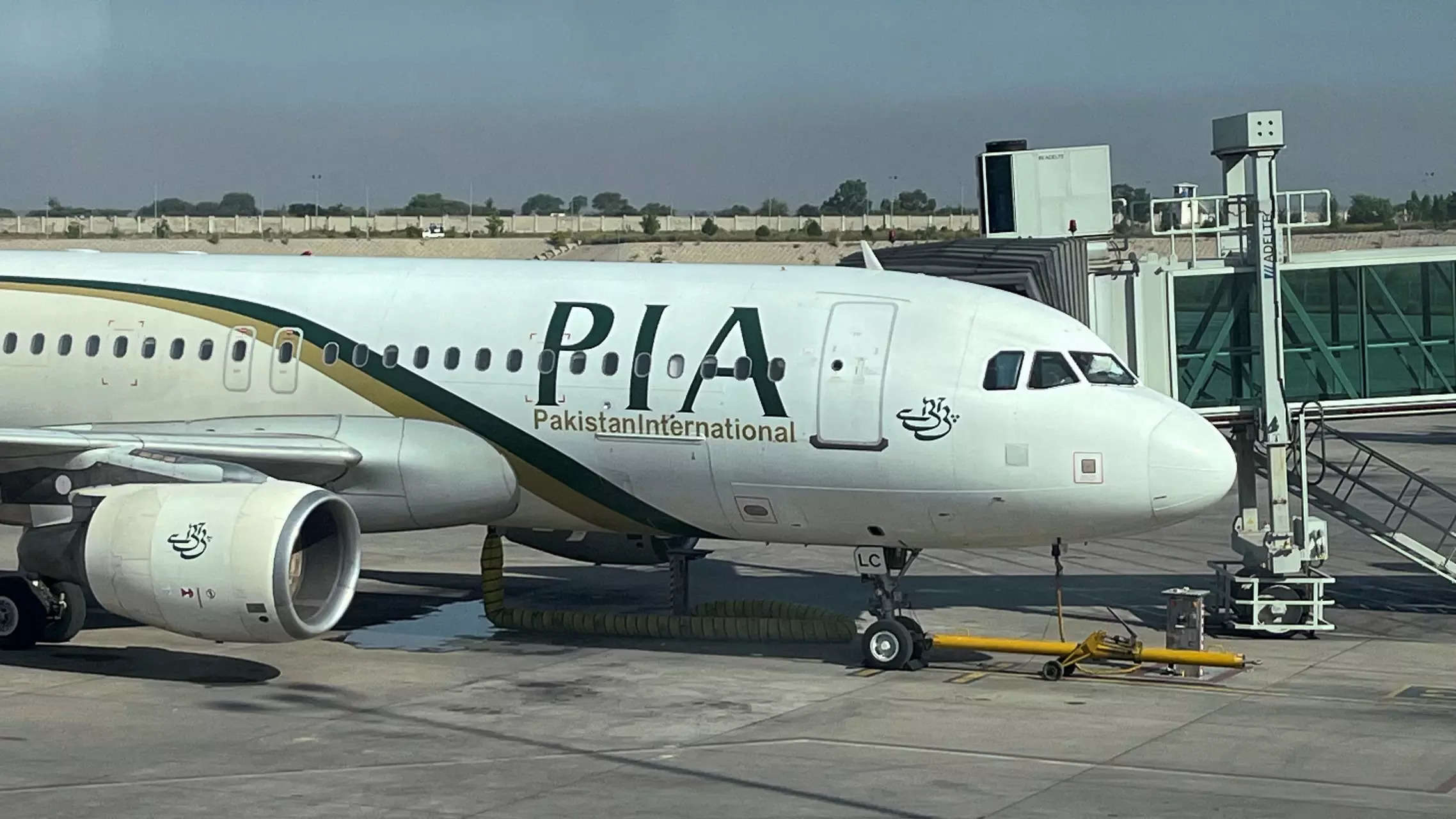[ad_1]
NEW DELHI: In a final move before the upcoming elections, Pakistan’s interim cabinet has approved the restructuring of the financially troubled national carrier, Pakistan International Airlines (PIA), as part of its strategy to privatise the airline, which has been facing losses for years. The caretaker government, just two days prior to the elections, decided to split PIA into two separate entities named TopCo and HoldCo, as outlined in a statement following the late Tuesday cabinet meeting chaired by interim Prime Minister Anwaarul Haq Kakar.
The restructuring plan, based on the recommendations of a financial adviser hired for the purpose, involves assigning specific operations such as engineering, ground handling, flight kitchen, and training to TopCo.Meanwhile, HoldCo will be responsible for managing entities like Precision Engineering Complex, PIA Investment Limited, and subordinate departments and properties. The move aims to attract investors to PIA and streamline its operations.
Fawad Hasan Fawad, the Minister for Privatisation, presented the proposal, emphasizing that the bifurcation would create an environment conducive to investment in PIA. The cabinet also directed the resolution of disputes related to dues owed to government organizations by PIA, expediting the overall restructuring process.
Additionally, the Ministry of Privatisation’s recommendation, which received cabinet approval, included the privatization of the First Woman Bank.
The decision to split PIA was intended to pave the way for its privatization; however, the timing posed challenges as the caretaker government had a limited tenure, set to end with the election of a new parliamentary leader on February 8. Previous attempts by various governments to privatize PIA had faced political opposition due to concerns about the impact on thousands of airline employees. The caretaker government, expected to act without fear of political consequences, faced delays in the process, and the Election Commission of Pakistan intervened before substantial progress could be made.
Although the interim cabinet made a crucial decision to bifurcate the national flag carrier, the ultimate fate of PIA and the execution of its privatization plan will be at the discretion of the incoming government, presenting potential challenges in implementation.
The restructuring plan, based on the recommendations of a financial adviser hired for the purpose, involves assigning specific operations such as engineering, ground handling, flight kitchen, and training to TopCo.Meanwhile, HoldCo will be responsible for managing entities like Precision Engineering Complex, PIA Investment Limited, and subordinate departments and properties. The move aims to attract investors to PIA and streamline its operations.
Fawad Hasan Fawad, the Minister for Privatisation, presented the proposal, emphasizing that the bifurcation would create an environment conducive to investment in PIA. The cabinet also directed the resolution of disputes related to dues owed to government organizations by PIA, expediting the overall restructuring process.
Additionally, the Ministry of Privatisation’s recommendation, which received cabinet approval, included the privatization of the First Woman Bank.
The decision to split PIA was intended to pave the way for its privatization; however, the timing posed challenges as the caretaker government had a limited tenure, set to end with the election of a new parliamentary leader on February 8. Previous attempts by various governments to privatize PIA had faced political opposition due to concerns about the impact on thousands of airline employees. The caretaker government, expected to act without fear of political consequences, faced delays in the process, and the Election Commission of Pakistan intervened before substantial progress could be made.
Although the interim cabinet made a crucial decision to bifurcate the national flag carrier, the ultimate fate of PIA and the execution of its privatization plan will be at the discretion of the incoming government, presenting potential challenges in implementation.
[ad_2]
Source link


